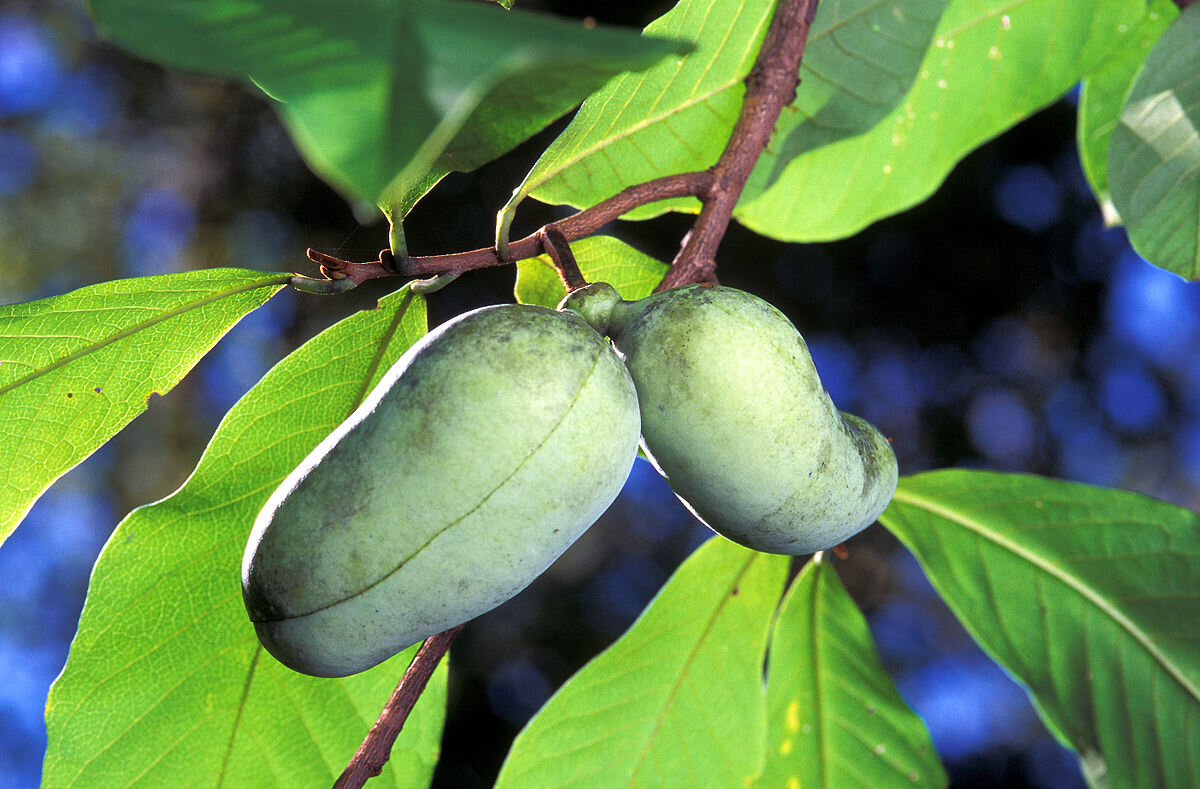Welcome to my Food Forest where I grow an number of fruits in the Bee Better Teaching Garden. Information in this fruit series is based on knowledge I’ve gained growing in hardiness zone 7b, in Raleigh, North Carolina. Helen Yoest
Kind:
Latin Name: Asimina triloba
Common Name: Pawpaw
Type: Deciduous tree
Height: 15 to 25 feet
Spread: 15 to 25 feet
Pollination: Pawpaw trees can be fickle with regards to what sex the flowers are. Pawpaw flowers are termed trioecious (subdioecious), which means they have separate male, female as well as hermaphroditic plants. Pawpaws need a friend. It takes two to tango. To fruit, plant at least two.
When planting pawpaw trees, leave about 15 to 25 feet of space between trees and other structures.
Pawpaw blossoms are designed by their color (purplish red) and odor (fetid) to attract their primary pollinators, various species of flies and beetles. Bees rarely, if ever, visit pawpaw flowers.
Fruit Health Benefits: Only some research exits, and we didn’t feel like it would be adequate for us to provide other people’s findings here; not until it is science-based.
Wildlife Benefits: Fly and beetle pollen plant. Host butterfly plant of the Zebra butterfly, Heliconius charithonia
Origin of species: Native to Eastern, Southern, and Midwestern United States and adjacent southernmost Ontario, Canada, from New York west to southeastern Nebraska, and south to northern Florida and eastern Texas
Cultivars: We grow the straight species, but cultivars include: ‘Mango’, ‘NC-1, ‘Pennsylvania Golden’, ‘Prolific’, ‘Overleese’ and ‘Sunflower’. We have never see these for sale, but they do exist.
Culture Information:
Sun: Full sun to part shade
Water: Medium to wet
Zone: 5 to 9
Years to bear fruit: A long time. We planted two, one gallon sized plants, and it took seven years to fruit. It was worth it, though.
Harvest Time: Early August.
Containers: Though the pawpaw tree can reach a mature height of 25 feet, it can be container-planted for a more manageable size.
Care:
Plant: Dig hole 2x the width of the nursery pot, and no deeper than level with the growing point in the pot. Pawpaws prefer a moist, fertile soil. The soil should be slightly acidic to neutral and well-drained. Prepare a soil that is rich in organic matter by working a thick layer of compost deep into the soil.
Fertilizer/pH: Ideal pH is 5.5 to 7. The literature says, “Help young seedlings and saplings establish themselves by fertilizing pawpaw trees with a balanced liquid fertilizer every few weeks for the first growing season.” We did nothing other than adding a layer of compost in spring.
Mulch: Add a layer of compost in the spring.
Groom/Prune: As pawpaws age, corrective pruning may be necessary. The best time to prune is late winter or early spring, when the tree is dormant. Corrective pruning consists of removing broken, crossing, dead, or diseased branches. Since pawpaw’s fruit is produced on new growth, annual pruning will stimulate new growth on older trees.
Pest/disease Control: No serious insect or disease problems.
Propagation: Coming soon!
Comments:
Ok, pawpaws are a funky fruit, but oh, so delicious! Their taste is similar to both a mango and a banana. They are super easy to eat—you can either choose to eat the fruit raw, or mix it into recipes to create exotic dishes. Simply cut the pawpaw in half lengthwise, remove the seeds (they are toxic), and eat with a spoon.
It should be noted, some people can’t tolerate pawpaw, making the sick, vomiting, and hives. When first tasting a pawpaw, eat no more than a half of one to see how your body reacts!

